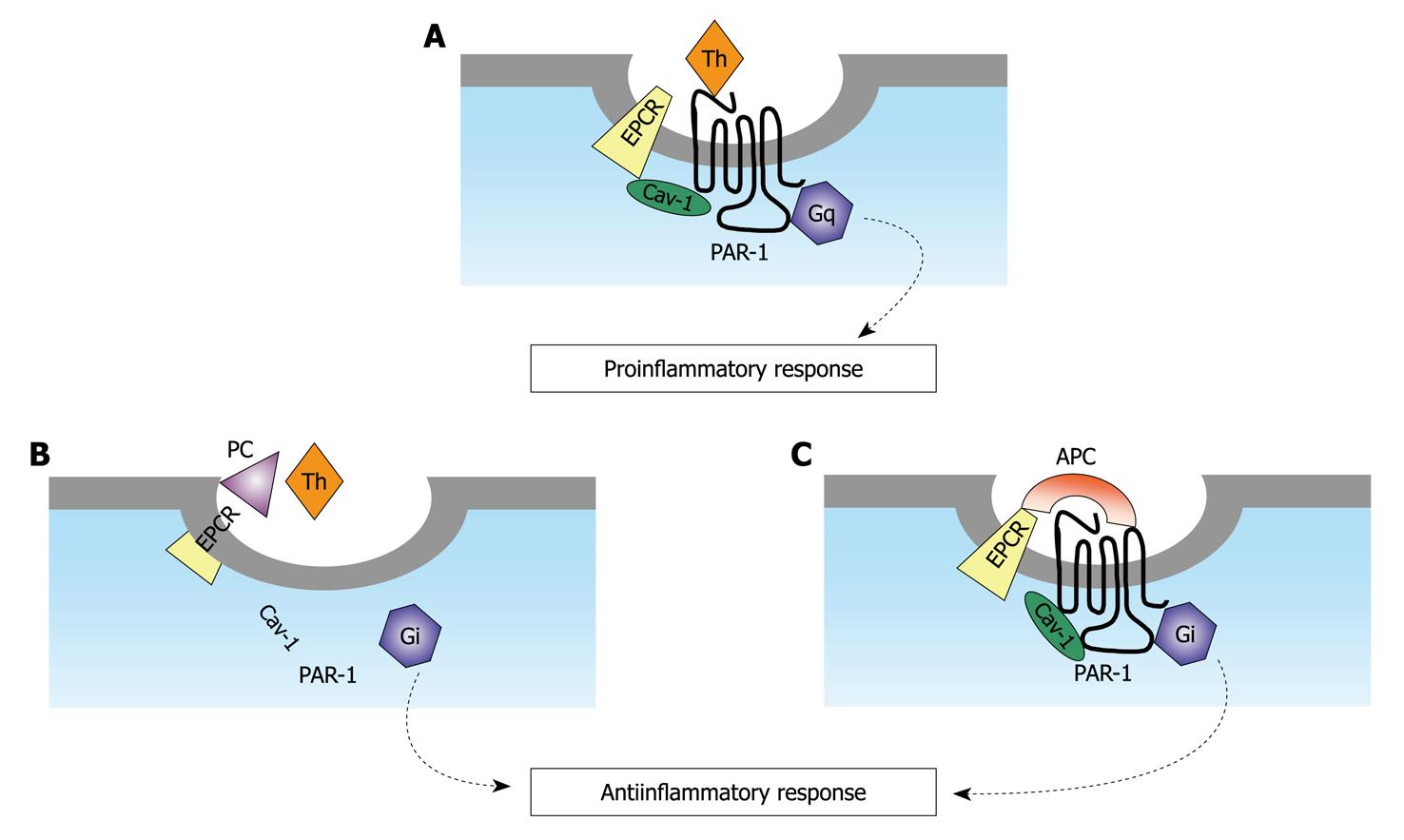Copyright
©2011 Baishideng Publishing Group Co.
World J Gastroenterol. Feb 7, 2011; 17(5): 594-608
Published online Feb 7, 2011. doi: 10.3748/wjg.v17.i5.594
Published online Feb 7, 2011. doi: 10.3748/wjg.v17.i5.594
Figure 1 Models of protease-activated receptor-1 cleavage and activation by either activated protein C or thrombin when endothelial protein C receptor is occupied by its ligand protein C.
A: The unoccupied endothelial protein C receptor (EPCR) is associated with caveolin-1 (Cav-1) within lipid rafts of endothelial cells. Upon thrombin cleavage of protease-activated receptor (PAR)-1, a pro-inflammatory signal is generated through G12/13 and Gq under these conditions; B: The occupancy of EPCR by protein C (PC) results in dissociation of EPCR from Cav-1. This process is linked with the coupling of PAR-1 to Gi. Thrombin cleavage of PAR-1 initiates an antiinflammatory response under these conditions; C: The same as (B) except that the EPCR and PAR-1 dependent protective signaling response is mediated by activated protein C (APC) (adapted from[159]).
- Citation: Scaldaferri F, Lancellotti S, Pizzoferrato M, Cristofaro RD. Haemostatic system in inflammatory bowel diseases: New players in gut inflammation. World J Gastroenterol 2011; 17(5): 594-608
- URL: https://www.wjgnet.com/1007-9327/full/v17/i5/594.htm
- DOI: https://dx.doi.org/10.3748/wjg.v17.i5.594









